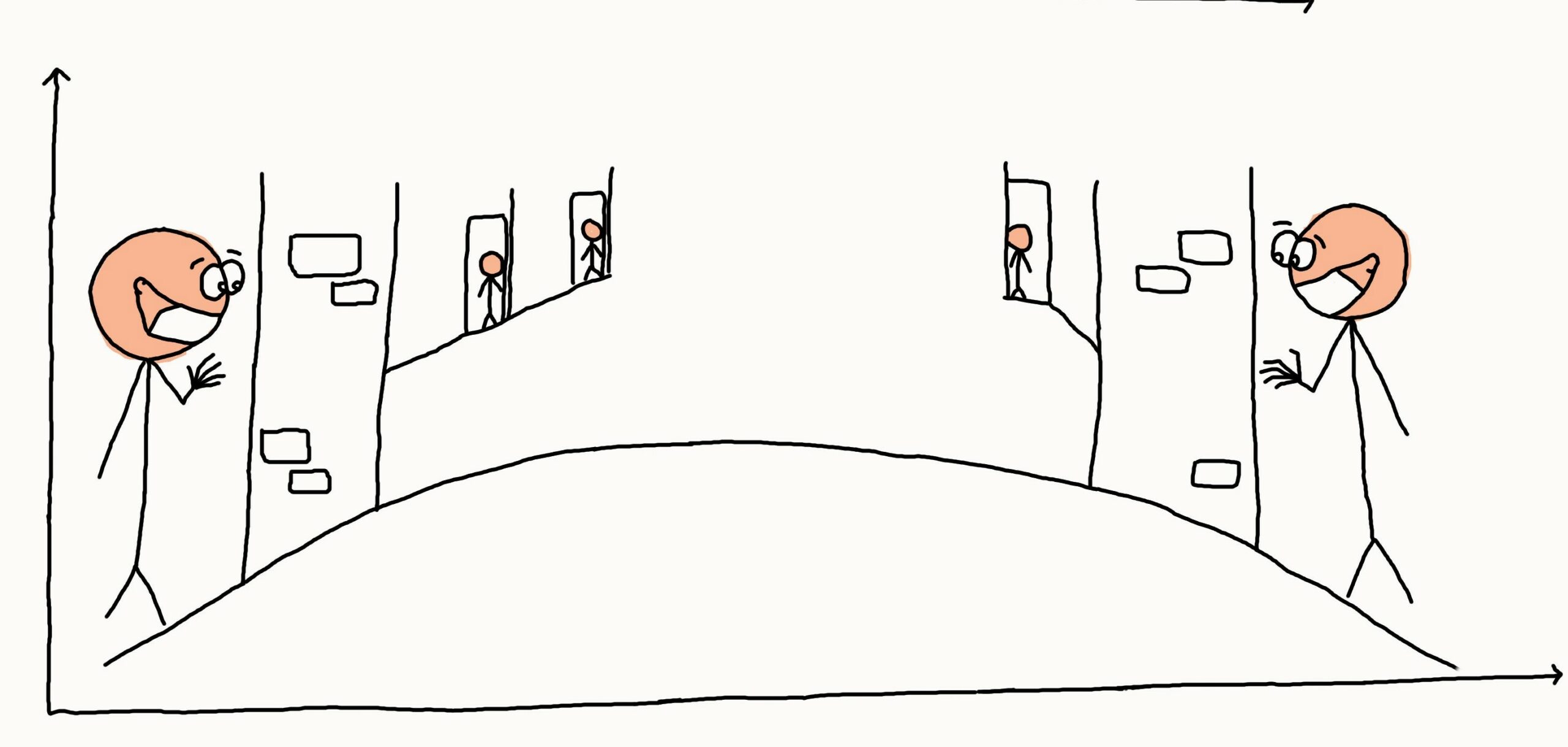Simple Solutions to Contactless Healthcare

Original Image created by Sukriti Banthiya. Submitted for United Nations Global Call Out To Creatives on UnSplash
The COVID-19 crisis has resulted in a new normal forcing practices to find ways to encourage “Contactless Healthcare”. Brick-and-mortar businesses are having to pay special attention to sanitation and physical distancing. For example, there has been a surge in demand for Mobile Payments (offsite) as well as Contactless Payments (onsite). Similarly, Healthcare facilities have turned to Telehealth for offsite care. Should there also be a notion of Contactless Healthcare for onsite care?
When care is delivered onsite, Healthcare facilities must do everything in their power to reduce risk of contagion between patients and staff. Health as well as business considerations necessitate it. Patients won’t come back to facilities which have lax standards for sanitation and workflow. In addition, maintaining staff health is critical for business continuity.
To adopt a well-thought-out workflow that reduces risk of contagion, facilities must reduce the number of touch points where physical proximity or contact is needed. We outline a few suggestions below.
Mobile-friendly Intake Forms
Allowing patients to fill their “New Patient Forms” packet on their smart phones at home or while they are waiting in your parking lot will help reduce the amount of time they have to spend inside the practice. This also is super useful for Telehealth appointments and for scenarios where patients don’t have computers or laptops.
The alternatives of (a) using paper forms with clipboards and pens (b) electronic forms on standing kiosks (c) electronic forms on tablets, are all potential germ-carrying vehicles from patient-to-patient and staff-to-patient. These also increase the load on staff because they have to constantly disinfect these items.
Allowing patients to fill forms on their own devices is clearly a better option than all the above. Also, mobile-friendliness should extend to additional forms like Follow Up Forms, Telehealth Consent Form, and Informed Consent Forms.
Image Capture from Phone
Germs could also be transferred when patients hand their insurance cards and drivers license to staff for scanning purposes. This can be avoided by allowing patients to take images of these cards from their own phones. This is also of great value for Telehealth appts when patients are remote throughout the process, and for scenarios where patients don’t have computers or laptops.
This capability can also be used to get patients to share a selfie. Our clients tell us that this has actually become a critical need. In Telehealth scenarios, they need to make sure they are actually talking to the real patient. In onsite scenarios where patients are being asked to wait in the parking lot until their turn, staff find the photos helpful when they go out to fetch the patient.
Mobile and Contactless Payments
Healthcare facilities should have a strategy that accommodates remote payment as well as contactless onsite payment scenarios. Start with an automated patient engagement platform that lets patients know what their copayment or balance due amounts are. Make it easy for patients to pay these amounts remotely, preferably from their smartphones. For those patients that prefer to pay onsite, use a POS (Point of Sale) system that allows contactless payments and thereby helps reduce potential transfer of germs.
Shortening the In-Person Patient Care Process
Reducing the amount of time a patient has to spend at the Healthcare facility also lowers the risk of contagion. From a convenience standpoint too, patients appreciate the possibility of a quick in-and-out visit. A common strategy we have seen our clients employ is to have patients wait in their own cars in the parking lot until it is their turn to see their provider. This is better than having patients wait in a common waiting room as was customary in the past. Check out this blog post on how to communicate this change to patients.
Replacing certain onsite visits with Telehealth visits is another way to accomplish the goal of reducing the time spent onsite by patients. The U.S. Department of Health and Human Services (HHS) has scaled back restrictions on when Telehealth can be employed. You can find step-by-step instructions on how to transition to Telehealth in this blog post.
Additional Contactless Healthcare Options
We anticipate an increasing demand for devices that can capture and monitor patient vitals and readings without the need to come in contact with the patient. These would work as alternatives to stethoscopes, electrodes, and the like. Perhaps, there will be an increase in patient-owned devices for the same.
In conclusion, Telehealth is an important but smaller piece of the overall puzzle. Healthcare facilities will be well served to think through their end-to-end Healthcare delivery workflow and find avenues for automation and contactless care wherever possible. This will be appreciated by patients and help their business survive and thrive in the new normal.

Ravi Kalidindi is the Founder and CEO of Simple Interact, a Business-to-Business (B2B) Software-as-a-Service (SaaS) healthcare technology company that serves physician groups, hospitals, and FQHCs. Customers view Ravi as a trusted partner who can quickly comprehend business problems and suggest “keep it simple” solutions that are effective and easier to maintain over time.
Apart from investing his blood, sweat, and smiles into Simple Interact, Ravi occasionally finds time for his favorite pastimes: travel, golf, and motorcycling.
Recent Posts
Categories
- Automated Appointment Confirmations
- Automated Appointment Reminders
- Broadcast Messaging
- Case Studies
- COVID-19 Solutions
- EMR Integration
- Front Office Automation
- Informed Consent Forms
- On Demand Communication
- Online Intake Forms
- Online Reviews
- Patient Access
- Patient Acquisition
- Patient Engagement
- Patient Experience
- Patient Feedback
- Patient Intake
- Patient Relationship Management
- Patient Scheduling
- Practice Optimization
- Social Distancing
- Tablet Intake Forms
Archives
- April 2024
- March 2024
- February 2024
- January 2024
- December 2023
- November 2023
- October 2023
- September 2023
- August 2023
- July 2023
- June 2023
- May 2023
- April 2023
- March 2023
- February 2023
- January 2023
- December 2022
- November 2022
- October 2022
- September 2022
- August 2022
- July 2021
- December 2020
- May 2020
- March 2020
- November 2017
- June 2016